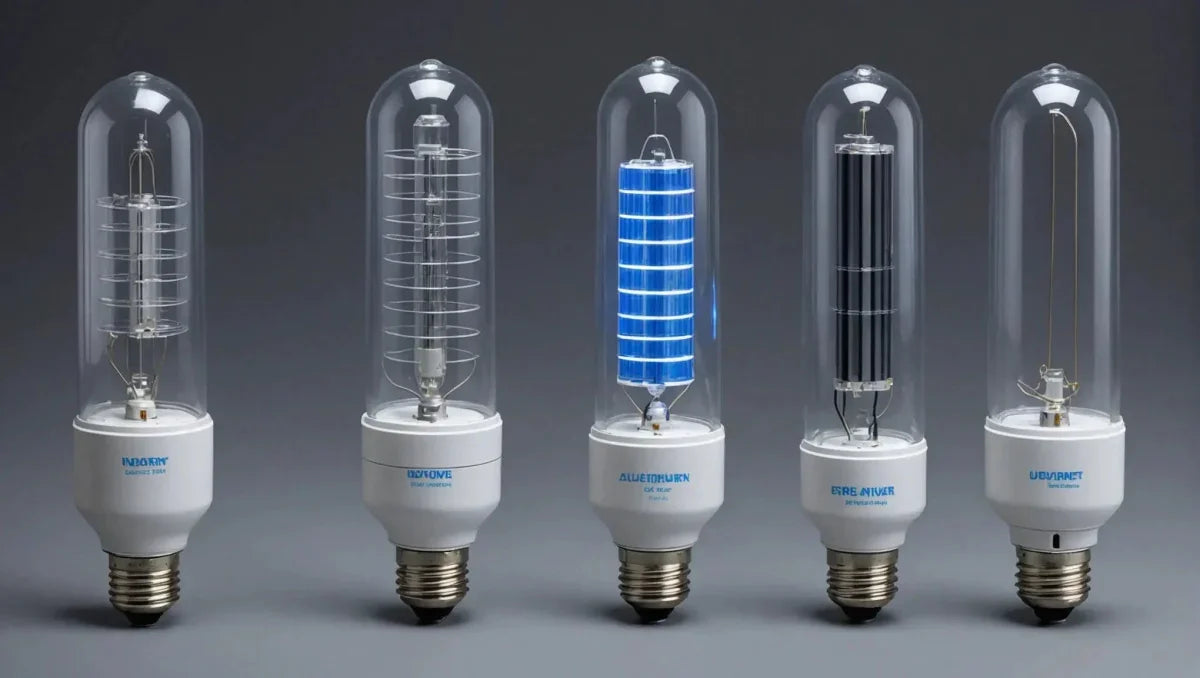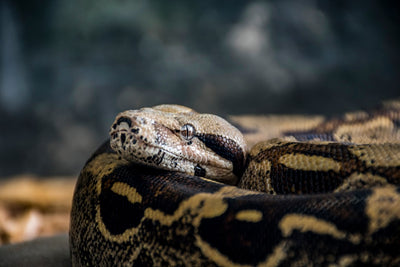
Discovering a myriad of UVB lamp options reveals a diverse array of solutions tailored to specific needs. From specialized narrowband designs to versatile broadband models, each variant serves distinct purposes across various fields. Whether for skin therapy or disinfection applications, the range of available UVB lamps offers flexibility to address a spectrum of requirements. This introduction primes us for an exploration into the nuances of UVB lamp technology, elucidating their unique features, advantages, and ideal applications. Embark on a journey through the multifaceted world of UVB lamps to unveil how these tools can illuminate pathways to effective outcomes.
Types of UVB Lamps
Fluorescent UVB Lamps
Metal Halide UVB Lamps
LED UVB Lamps
UVB lamps are essential tools used in various applications ranging from medical treatments to industrial processes. Understanding the different types of UVB lamps available in the market is crucial for choosing the right one for specific needs.
- Fluorescent UVB Lamps:
Fluorescent UVB lamps are commonly used for residential purposes such as reptile terrariums and home phototherapy units. They are cost-effective and energy-efficient, making them popular for small-scale applications.
- Metal Halide UVB Lamps:
Metal Halide UVB lamps are known for their high-intensity output, making them suitable for industrial processes like UV curing in printing and coating industries. These lamps provide a broad spectrum of UV radiation, allowing for versatile applications.
- LED UVB Lamps:
LED UVB lamps have gained popularity in recent years due to their compact size, long lifespan, and low energy consumption. They are widely used in medical phototherapy, water purification, and sterilization processes.
UVB lamps play a significant role in various fields due to their unique properties. Let's delve deeper into each type of UVB lamp to understand their applications better.
- Fluorescent UVB Lamps:
While fluorescent UVB lamps are excellent for residential use, they are also utilized in dermatology clinics for treating skin conditions like psoriasis and eczema. The controlled UV output of these lamps is beneficial for targeted phototherapy treatments.
- Metal Halide UVB Lamps:
In industrial settings, metal halide UVB lamps are indispensable for tasks requiring high UV intensity, such as adhesive curing in electronics manufacturing. Their ability to deliver consistent UV output makes them reliable for critical processes.
- LED UVB Lamps:
Beyond their current applications, LED UVB lamps are increasingly being adopted in the food industry for UV disinfection to enhance food safety and extend shelf life. Their precise UV delivery ensures effective sterilization without compromising food quality.
When selecting a UVB lamp, it's essential to consider not only the type but also factors like UV wavelength, irradiance levels, and exposure duration to achieve optimal results. Proper maintenance and periodic calibration are crucial for ensuring the lamp's performance and longevity.
The versatility of UVB lamps opens up a world of possibilities across diverse sectors, from healthcare to manufacturing. By staying informed about the latest advancements in UVB technology, users can harness the power of these lamps for improved efficiency and outcomes in their respective fields.
Comparison of UVB Lamp Types
Strengths and Weaknesses of Fluorescent UVB Lamps
Fluorescent UVB lamps have been a popular choice for reptile keepers for many years. They are affordable and widely available, making them a common option for providing UVB Lighting to reptiles. However, they do have their drawbacks. One major weakness is their limited lifespan compared to other types of UVB lamps. Additionally, fluorescent UVB lamps can be less efficient in terms of UVB output over time. Despite these limitations, fluorescent UVB lamps remain a popular choice for beginners or for reptiles with lower UVB requirements.
Features of Metal Halide UVB Lamps
Metal halide UVB lamps are known for their high UVB output, making them a great choice for reptiles that require high UVB levels. These lamps are often used for larger enclosures or for reptiles that need intense UVB exposure. While they are effective in providing the necessary UVB, metal halide UVB lamps can be more expensive upfront compared to other options. However, their ability to mimic natural sunlight closely makes them ideal for reptiles that require a more intense UVB source.
Advantages of LED UVB Lamps
LED UVB lamps are a newer technology in the reptile lighting market. They offer several advantages over traditional UVB lamps, including energy efficiency, longevity, and customizable settings. LED UVB lamps can be adjusted to provide specific wavelengths of UVB light, allowing for more precise control over the UVB exposure for reptiles. While LED UVB lamps may have a higher initial cost, their long lifespan and energy efficiency can make them a cost-effective choice in the long run. Additionally, LED UVB lamps produce very little heat, reducing the risk of overheating in the enclosure, and some models are dimmable, providing even more control over the light output.
Comparison of UVB Lamp Types
When deciding on the most suitable UVB lamp for your reptile, it's crucial to weigh the strengths and weaknesses of each type. Fluorescent UVB lamps, despite their affordability, may not be the best choice for reptiles requiring high UVB levels or for long-term use due to their limited lifespan. Metal halide UVB lamps, with their intense UVB output, are ideal for reptiles needing strong UVB exposure but come at a higher initial cost. LED UVB lamps, on the other hand, offer energy efficiency, longevity, and customizable settings, making them a versatile choice for various reptile species and enclosure sizes.
Factors to Consider
When selecting a UVB lamp, consider factors such as your reptile's species, the size of the enclosure, and the specific UVB requirements. Some reptiles, like bearded dragons or chameleons, may benefit from the intense UVB output of metal halide lamps, while others, such as smaller gecko species, may thrive under the energy-efficient and customizable settings of LED UVB lamps. It's essential to provide the appropriate UVB lighting to ensure your reptile's overall health and well-being.
Conclusion
The choice of UVB lamp type should be based on careful consideration of your reptile's needs and the specific requirements of their habitat. Each type of UVB lamp offers unique advantages and limitations, and by understanding these factors, you can make an informed decision that promotes the optimal growth and development of your pet reptile.
Applications of UVB Lamps
UVB lamps, short for Ultraviolet B lamps, are widely recognized for their various applications across different sectors owing to their unique properties and benefits. Let's delve deeper into the multifaceted uses of UVB lamps.
Medical Use of UVB Lamps:
UVB lamps are extensively employed in medical settings, particularly in dermatology, for phototherapy treatments targeting skin conditions like psoriasis, eczema, and vitiligo. The controlled exposure to UVB light aids in managing these dermatological conditions, promoting skin healing and overall well-being.
Industrial Applications of UVB Lamps:
In industrial environments, UVB lamps play a crucial role in processes such as curing adhesives, inks, and coatings. The focused and intense UVB light facilitates rapid and efficient curing processes, enhancing productivity in diverse manufacturing operations. Moreover, UVB lamps are utilized in sterilization procedures to maintain aseptic conditions in controlled environments.
Home and Personal Use of UVB Lamps:
The versatility of UVB lamps extends to home and personal care applications, gaining popularity for skincare routines and hygiene maintenance. Individuals utilize UVB lamps for various purposes, such as curing gel manicures at home for long-lasting nail treatments. Furthermore, UVB sanitizing wands are utilized for disinfecting surfaces, providing a convenient and effective method to uphold cleanliness and hygiene standards.
Emerging Trends and Innovations:
Beyond the traditional applications, ongoing research and advancements have led to innovative uses of UVB lamps. For instance, in the agricultural sector, UVB lamps are being explored for their potential in enhancing plant growth and pest control through controlled exposure to UV light.
The Future of UVB Lamps:
With continuous advancements in technology and growing awareness of the benefits of UVB light, the future holds promising opportunities for the further diversification of UVB lamp applications across various sectors. From healthcare to manufacturing and personal care, UVB lamps continue to revolutionize processes and contribute significantly to improving efficiency and well-being.
The diverse applications of UVB lamps underscore their importance and relevance in enhancing processes, promoting health, and driving innovation across different industries. As the understanding of UVB light expands, the potential for harnessing its benefits in novel ways continues to evolve, paving the way for a brighter future powered by UVB technology.
Choosing the Right UVB Lamp
Considerations for Different Purposes
Selecting the appropriate UVB lamp is essential to ensure optimal outcomes for various applications. Whether you are setting up a reptile terrarium, engaging in phototherapy, or any other UVB-related activity, understanding the specific purpose is crucial.
Factors to Keep in Mind
-
UVB Intensity: The intensity of UVB light emitted by the lamp plays a significant role in its effectiveness. Different activities require different levels of UVB intensity. For instance, reptiles may need lower intensity compared to medical phototherapy, where higher intensity is often necessary.
-
Wavelength: The wavelength of UVB light influences its penetration depth. Depending on whether you are targeting surface-level exposure or deeper tissue penetration, you need to choose a lamp with an appropriate wavelength range. Consult with experts to determine the ideal wavelength for your intended use.
-
Size and Coverage: Consider the size of the area that needs UVB exposure. Larger spaces may necessitate lamps with wider coverage or multiple units strategically placed to ensure uniform irradiation. Assess the dimensions of the area to determine the most suitable lamp configuration.
-
Safety Features: Prioritize safety features when selecting a UVB lamp. Look for models with built-in timers to control exposure duration, heat guards to prevent overheating, and UVB shields to minimize the risk of accidental skin damage. Safety should be a top priority to prevent adverse effects from overexposure.
-
Durability and Lifespan: Opt for a UVB lamp that offers durability and a long lifespan. Investing in a high-quality, reliable lamp can save you money in the long run by reducing the frequency of replacements. Consider the manufacturer's reputation and product reviews to gauge the lamp's longevity.
-
Installation and Maintenance: Proper installation and regular maintenance are crucial for the optimal performance of UVB lamps. Follow the manufacturer's guidelines for installation to ensure effective UVB delivery. Additionally, schedule routine maintenance checks to inspect for any issues and replace bulbs as needed.
By carefully evaluating these factors and aligning them with your specific requirements, you can confidently select the right UVB lamp that best suits your needs. Prioritize safety, efficiency, and longevity to maximize the benefits of UVB light in your chosen application.
Conclusion
Understanding the different types of UVB lamps available is essential for making informed decisions when it comes to using them for various purposes. Whether it is for reptile husbandry, skin conditions like psoriasis, or sterilization processes, knowing the differences between fluorescent, compact fluorescent, and mercury vapor UVB lamps can help users choose the most suitable option for their specific needs. Regular maintenance, proper usage guidelines, and safety precautions are vital aspects to consider to maximize the benefits of UVB lamps while minimizing potential risks.






